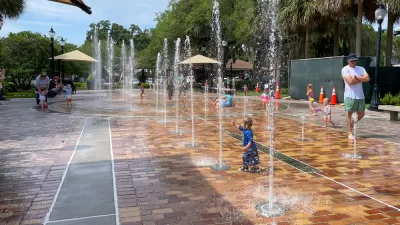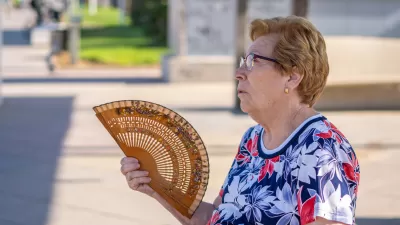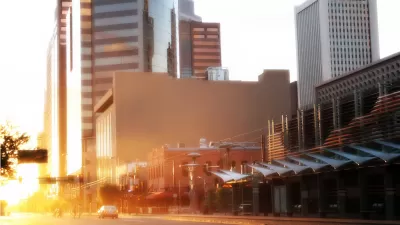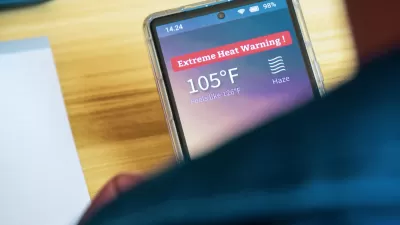As extreme heat threatens infrastructure and public health, municipal ‘heat officers’ work to develop cooling strategies to keep urban residents safe from increasingly hot temperatures.

“About a fifth of the most populated cities in the world could warm by more than 4°C by 2050,” writes Michaela Haas in Next City. In the United States, an estimated 12,000 people die each year from heat-related causes. Haas profiles two of the nation’s first ‘heat officers,’ Marta Segura in Los Angeles and Jane Gilbert in Miami-Dade County, who are tasked with developing strategies for cooling their cities and reducing the impact of extreme heat.
To address the urgency of the threat quickly, Segura is working on some ‘low-hanging fruit’ policies that can make an immediate difference, such as “a campaign to educate Angelenos about the risks and first signs of heat-related illnesses; air conditioning units for underserved communities; and a ‘cooling network’ of shops, department stores and fast-food chains at which people can come in and cool down, ‘so that everybody who starts feeling overheated on their way to the bus stop knows: I can get a glass of cool water here and sit down in a cooled space to recover at no cost.’”
In Miami, Gilbert plans to increase tree canopy in the city’s most vulnerable areas and supporting homeowners and renters in retrofitting their homes and purchasing efficient cooling systems. Miami and Los Angeles have also banded together with 23 other cities in the “cool roadways partnership” to negotiate lower prices for cooling roadway materials.
To help cities mitigate the impacts of heat, the C40 Cool Cities Network has created an ‘urban cooling toolbox’ that addresses “Green infrastructure (such as trees, green roofs, permeable pavements), blue infrastructure (drinking fountains, public swimming pools and other forms of water cooling), gray infrastructure (cool roofs, cool pavements, passive cooling in buildings), communication (outreach, cooling centers and campaigns), policy (climate design guidelines, heat emergency response plans, cooling tax rebate programs) and urban development (urban geometry, building materials).”
FULL STORY: How America’s First ‘Heat Officers’ Are Cooling Miami and Los Angeles

Alabama: Trump Terminates Settlements for Black Communities Harmed By Raw Sewage
Trump deemed the landmark civil rights agreement “illegal DEI and environmental justice policy.”

Planetizen Federal Action Tracker
A weekly monitor of how Trump’s orders and actions are impacting planners and planning in America.

Why Should We Subsidize Public Transportation?
Many public transit agencies face financial stress due to rising costs, declining fare revenue, and declining subsidies. Transit advocates must provide a strong business case for increasing public transit funding.

Understanding Road Diets
An explainer from Momentum highlights the advantages of reducing vehicle lanes in favor of more bike, transit, and pedestrian infrastructure.

New California Law Regulates Warehouse Pollution
A new law tightens building and emissions regulations for large distribution warehouses to mitigate air pollution and traffic in surrounding communities.

Phoenix Announces Opening Date for Light Rail Extension
The South Central extension will connect South Phoenix to downtown and other major hubs starting on June 7.
Urban Design for Planners 1: Software Tools
This six-course series explores essential urban design concepts using open source software and equips planners with the tools they need to participate fully in the urban design process.
Planning for Universal Design
Learn the tools for implementing Universal Design in planning regulations.
Caltrans
Smith Gee Studio
Institute for Housing and Urban Development Studies (IHS)
City of Grandview
Harvard GSD Executive Education
Toledo-Lucas County Plan Commissions
Salt Lake City
NYU Wagner Graduate School of Public Service





























